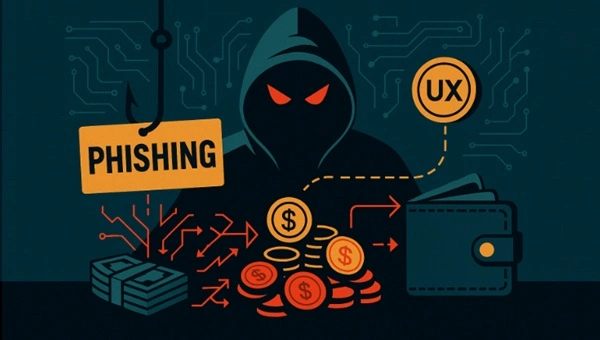The Breach Unfolds
UXLink, a social-driven blockchain platform, secures major transactions with multi-signature wallets, mechanisms requiring multiple key approvals to authorize moves. However, a vulnerability in its Ethereum smart contract, linked to a delegateCall function, allowed attackers to seize administrative control. Once inside, they extracted $11.3 million in assets, including 3.7 wrapped bitcoins worth over $400,000 each, alongside ether and stablecoins totaling $4.5 million.
With admin privileges, they minted two billion new UXLINK tokens on the Arbitrum sidechain, nearly doubling the circulating supply overnight. Roughly 490 million of these tokens were funneled through decentralized exchanges, converted for 6,732 ETH, valued at about $28.1 million.
Investigators tracked the funds through multiple wallets, each designed to break liquidity into smaller trades to avoid detection. The tactics resembled past exploits like the Poly Network hack of 2021, where $610 million was initially stolen.
Security firm PeckShield flagged the activity, prompting exchanges such as Upbit to freeze suspicious deposits. UXLink assured users that individual wallets remained intact, but confidence eroded quickly as token dilution sent markets reeling.
From Victor to Victim
The exploiters’ fortune reversed just 24 hours later. On September 23, while consolidating stolen assets, one of their key wallets signed a malicious “increaseAllowance” transaction, granting an external contract permission to move tokens. That contract was a phishing trap, laid by the notorious Inferno Drainer syndicate, known for tricking victims with deceptive interfaces and fake approval prompts.
The impact was immediate: 542 million UXLINK tokens, valued at roughly $43 million, were siphoned into malicious addresses. Analysts at Bitedge echoed SlowMist CEO Yu Xian’s view that the attackers had likely engaged with a fraudulent site posing as a legitimate dApp, missing subtle warning signs in the process.
Blockchain data indicates the stolen tokens were swiftly moved across multiple chains, further complicating recovery efforts.
This blunder cut the attackers’ net profit drastically. From an estimated $70 million total haul, their take fell to below $28 million after the phishing loss. It also exposed how even experienced actors remain vulnerable to classic deception techniques, mirroring parts of the Ronin Network hack in 2022, where social engineering played a decisive role.
Market Shockwaves
The combined events wreaked havoc on UXLink’s ecosystem. UXLINK’s token price, trading above $0.30 before the breach, collapsed by 70% to $0.09 within a day. Market capitalization shrank by $70 million, and trading volume spiked as holders rushed to exit positions. Compared to other DeFi exploits, the impact was severe.
The GMX protocol’s July incident, for instance, saw a $42 million theft but limited its token drop to 15% thanks to rapid white-hat intervention.
The scale of token minting intensified UXLink’s decline. Flooding exchanges with freshly minted tokens eroded liquidity and undermined confidence. The broader DeFi market, meanwhile, showed relative resilience, declining just 2% during the same window.
UXLink’s Recovery Strategy
In response, UXLink announced a token migration plan on September 25. The initiative replaces the compromised contract with a new Ethereum-based one, capping total supply at one billion tokens and removing minting and burning functions entirely. Centralized exchanges will oversee bulk swaps, excluding hacker-linked accounts, while self-custody users can redeem tokens via a dedicated portal.
Compensation efforts include buyback programs, staking rewards, and trading incentives designed to stabilize the ecosystem. The protocol’s team is also coordinating with law enforcement and pursuing address freezes with major exchanges.
Their strategy mirrors recovery approaches taken by Cetus Protocol after a $220 million exploit earlier this year, which successfully restored much of its token value.
Lessons from a Double Heist
The UXLink saga exposes two critical weaknesses in the DeFi ecosystem: persistent smart contract vulnerabilities and the human factor. Multi-sig structures, once hailed as highly secure, continue to suffer from flaws in permission management. Meanwhile, phishing remains a potent weapon, capable of turning even seasoned attackers into victims.
The incident also signals a shift in crypto’s threat landscape, where attackers must now guard against their peers as much as platforms must guard against them.
For UXLink, the path forward will depend on transparency, cooperation, and proving that security lessons have truly been learned.
He has worked with several companies in the past including Economy Watch, and Milkroad. Finds writing for BitEdge highly satisfying as he gets an opportunity to share his knowledge with a broad community of gamblers.
Nationality
Kenyan
Lives In
Cape Town
University
Kenyatta University and USIU
Degree
Economics, Finance and Journalism



 Fact checked by
Fact checked by 


 eabungana@gmail.com
eabungana@gmail.com 